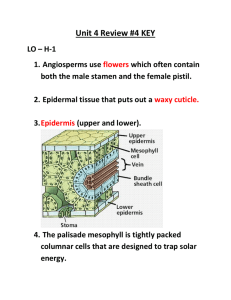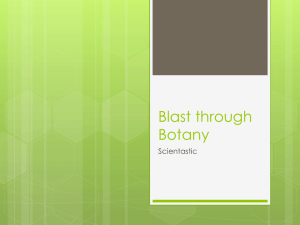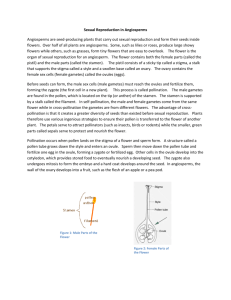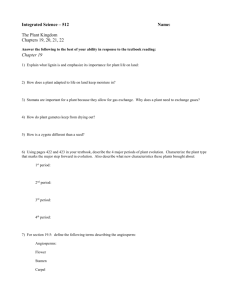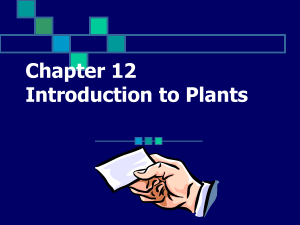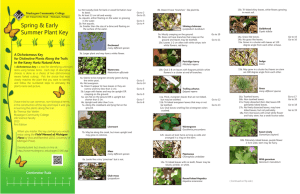Angiosperms
advertisement
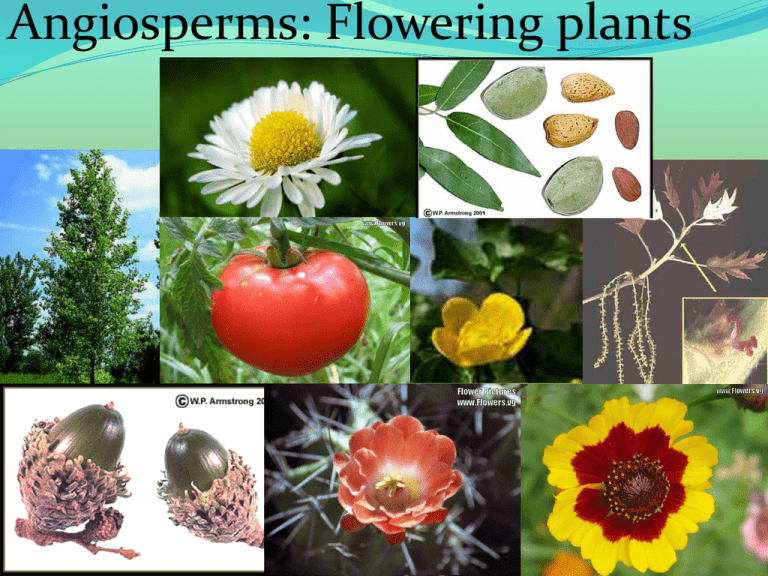
Angiosperms: Flowering plants I. Characteristics of Angiosperms (Division Anthophyta) A. Presence of complete or incomplete flowers B. Monocotyledonous or Dicotyledonous development C. Xylem and Phloem well defined within monocot or dicot arrangements. D. Presence of herbaceous or woody stems with monocot or dicot arrangement. E. Woody stems containing spring and summer wood. F. Presence of a pulpy or hard fruit that contains the developing embryonic structure of sporophytic nature, which arises from the gametophyte during the alternation of generations. Male flowers Female Flowers Female Flowers Magnified II. Angiosperms’ Evolutionary Timeline A. Angiosperms arose during the Mesozoic era, according to the fossil record B. During the disappearance of the greatest concentration of cycadeoids, angiosperms began differentiating and becoming more numerous during the end of the era. C. They continued to spread and further differentiated as animal pollinators became adapted to specific angiosperm species. D. This continued with the greater diversity of animal differentiation as it evolved simultaneously. III. Parts of a Flower III. Parts of a Flower..(Cont.) A. B. C. 1. 2. D. 1. 2. 3. E. Petals – showy part of the flower Sepals – green bud covering over flower Stamen – male part of the flower Anther – pollen head Filament – stalk that holds up the anther Pistil - female part of the flower Stigma – platform where pollen lands Style – stalk that holds up the stigma Ovary – contains the ovules Ovule – structure which develops into embryos in the form of seeds Stamens from an Amaryllis Anther Filament Female Flower Parts Style Stigma Ovary (Squash) Typical Fruits Apple Orange Tomato Pepper More Fruits you probably didn’t suspect! Cashew Walnut Chestnut Acorn Okra Squash Even More Fruits! Corn Cucumber Fruit The Stem attaches the flower and then the fruit to the branch it develops on. Stem Monoc0ts vs. Dicots Monocots Dicots 1. Flower parts in multiples of 3 Flower parts : Multiples of 4 or 5 2. Parallel venation Net venation 3. Vascular bundles arranged throughout stem Vascular bundles mostly around edge of stem 4. One cotyledon (seed leaf) How many petals here? Three! Two cotyledons (seed leaves) How many petals here? Five! Typical monocots 1. Lily 2. Grasses 3. Palm Trees 4. Wheat 5. Orchids Typical dicots 1. Oaks 2. Roses 3. Buttercups 4. Hibiscus 5. Red Maple
